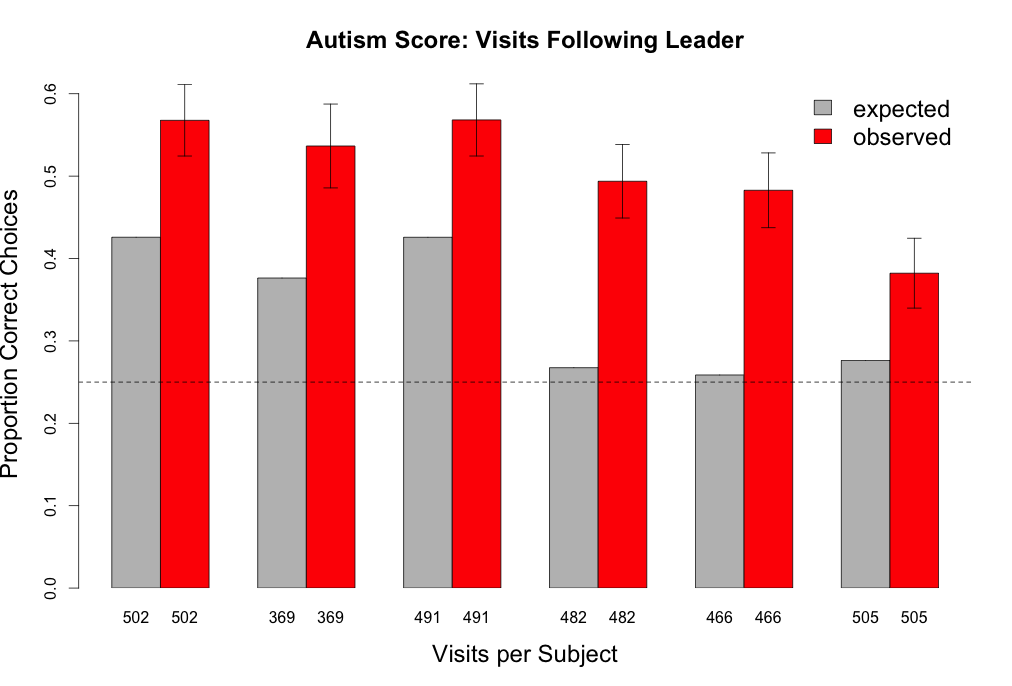IntelliCage Suites
The IntelliCage by TSE/NewBehavior is the prime industrialised fully-automated system for conditioning behavioral experimentation in laboratory animals, kept in home-cage groups. We can provide you with the most appropriate experimental designs and work out your analysis and presentation tools pertinent to your research goals, apart from advice on any other aspect of the system, the animals, and the scientific research. Note that we can also provide designs that allow for social interactions between animals – a feature often desired, e.g., in autism research, but not originally provided with the system.
A selection of experimental rationales is available as suites consisting of the respective IntelliCage experimental protocol file and FlowR bundle.
Those represent by no means all possible designs – we are happy to produce any suite custom-tailored to your research question!
- Phenotyping
- Temporal Scheme
- Spatial Scheme
- Taste Preference
- Novelty
- Conditioned Aversion
- Anxiety
- Impulsivity
- Discounting
- Fixed Ratio
- Attentional Shift
- Competition
- Autism Test
During free adaptation animals can acquire the ability to enter cage corners and drink at the water bottles behind the doors. Reveals initial exploratory activity and serves to define baseline activity of strains/conditions. A plethora of behavioral phenotypic measures can be extracted, including visit frequency and duration, nospepoking activity, licking amount, eveness and regularity of corner visiting, as well as circadian and ultradian patterns and inter-individual synchronisations (social groupings).
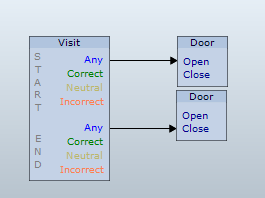
Animals are free to enter Corners at any time, Doors will open at Visit Start (i.e., when Presence and RFID tag number are registered), and close at Visit End (i.e., when both signals are no longer registered). Habituation to the apparatus can also be monitored with empty Design, i.e., Doors open at all times.
Four laboratories found for 3 mouse lines that activity differences were consistent between (color-coded) 4 different european labs, but differed significantly between strains! That went for all 4 measures, including Daypattern (nocturnal relative to diurnal activity).
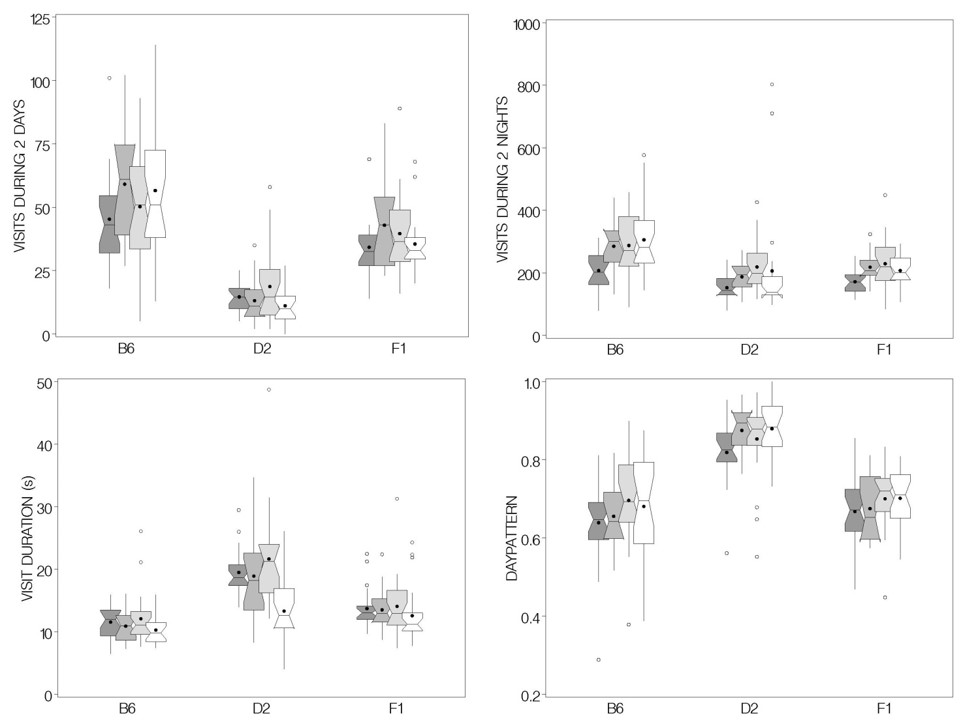
Mice become accustomed to have access to water only during particular times of day. This strongly enhances drinking motivation and, thereby, learning efficiency, in the absence of any punishment.
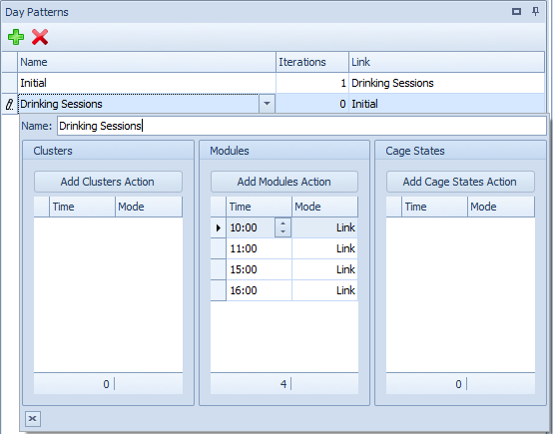
At 10:00 and 15:00 the Module jumps to its linked Module, which could be Free Adaptation. At 11:00 and 16:00 the Module jumps to the linked Module, as well, which would be Default. The latter only closes Doors at Visit End (see below). Iterations=0 means that this daypattern goes on indefinitely. Hence, animals have access to water for 1 hour at 2 times per day.
Hippocampally lesioned mice exhibit a clear and highly significant premature activity onset when exposed to drinking sessions, in comparison to sham-operated or striatally lesioned mice of the same strain.
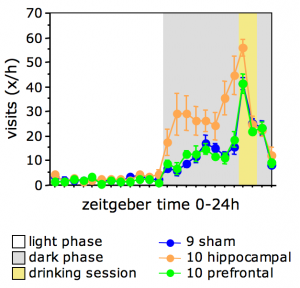
For Place preference, reward is presented at particular corners of the four ones per cage to each animal. That leads to a visit preference for that corner. It is easy to adapt that design to other spatio-temporal patterns, like patrolling, chaining, alternation, or serial reversal and many others.
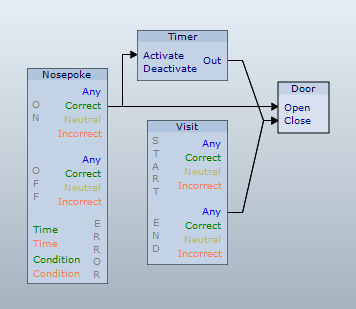
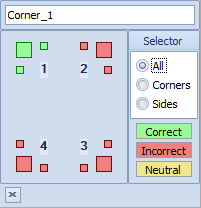
Animals are free to enter corners at any time, doors will open at Correct Nosepoke ON (i.e., when Nosepoke sensor is invoked), and close after the delay defined in the DoorTime unit. Only the Door at the side of the Nosepoke will open/close. The Correct Corner is defined in the Cluster panel of the Animal list. The animals assigned to „Cluster 1“ will get access to water only in Corner 1 (of the 4 corners per IntelliCage). Visit End induces all Doors to close, if there is any one open.
During reversed Place preference learning, animals initially cling to prior preference but then soon exhibit preferred visiting of new reward place.
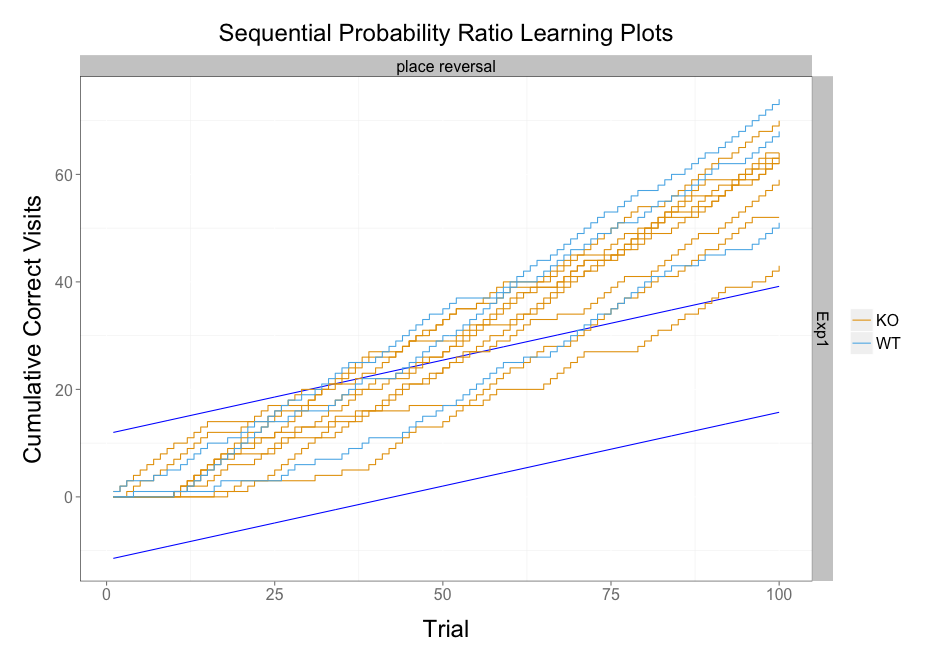
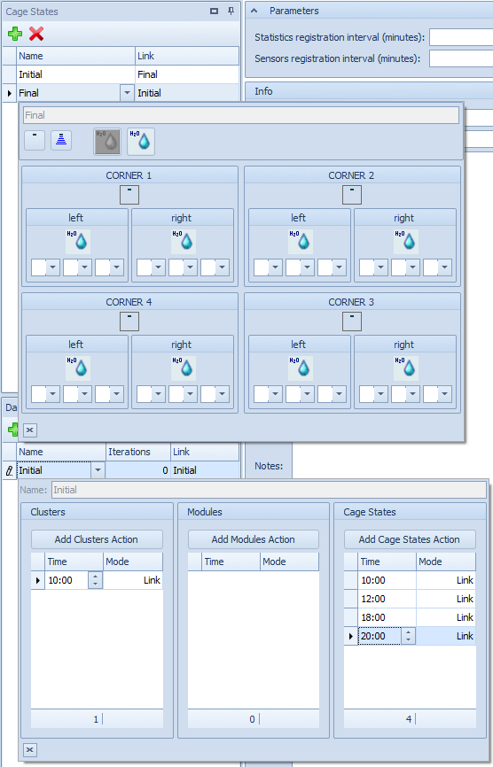
To test for drink preferences, the active Module is empty, i.e., Door state is given by the Cage States. Any restriction on access like requirement of nosepoke, temporal limitation of door opening, temporal and/or spatial schemes can be added, of course, depending on research question.
The Day Pattern changes Cage States and Clusters at 10 am every day. If Default Cluster and Initial Cage State were active before, e.g., after experimental start, now Cluster 1 and Final Cage State are active. At 12 noon Cage State changes back to Initial Cage State (all Doors closed), with a repetition of drinking access in the afternoon. Next day, Clusters are changed back to Default and Cages State pattern is repeated, and so on. Bottles must be switched before 10 or after 20 hours each day. Cluster switches are induced in order to avoid pre-existing pattern to affect taste-preference measures!
It lies with the experimentor to change the tasted bottles in accordance with the Cluster switches induced by the Day pattern!!!
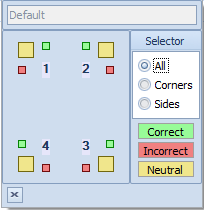
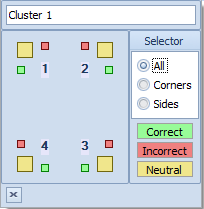
A wildtype and knock-out strain showed quite similar development of expressed lick preference for a compound.
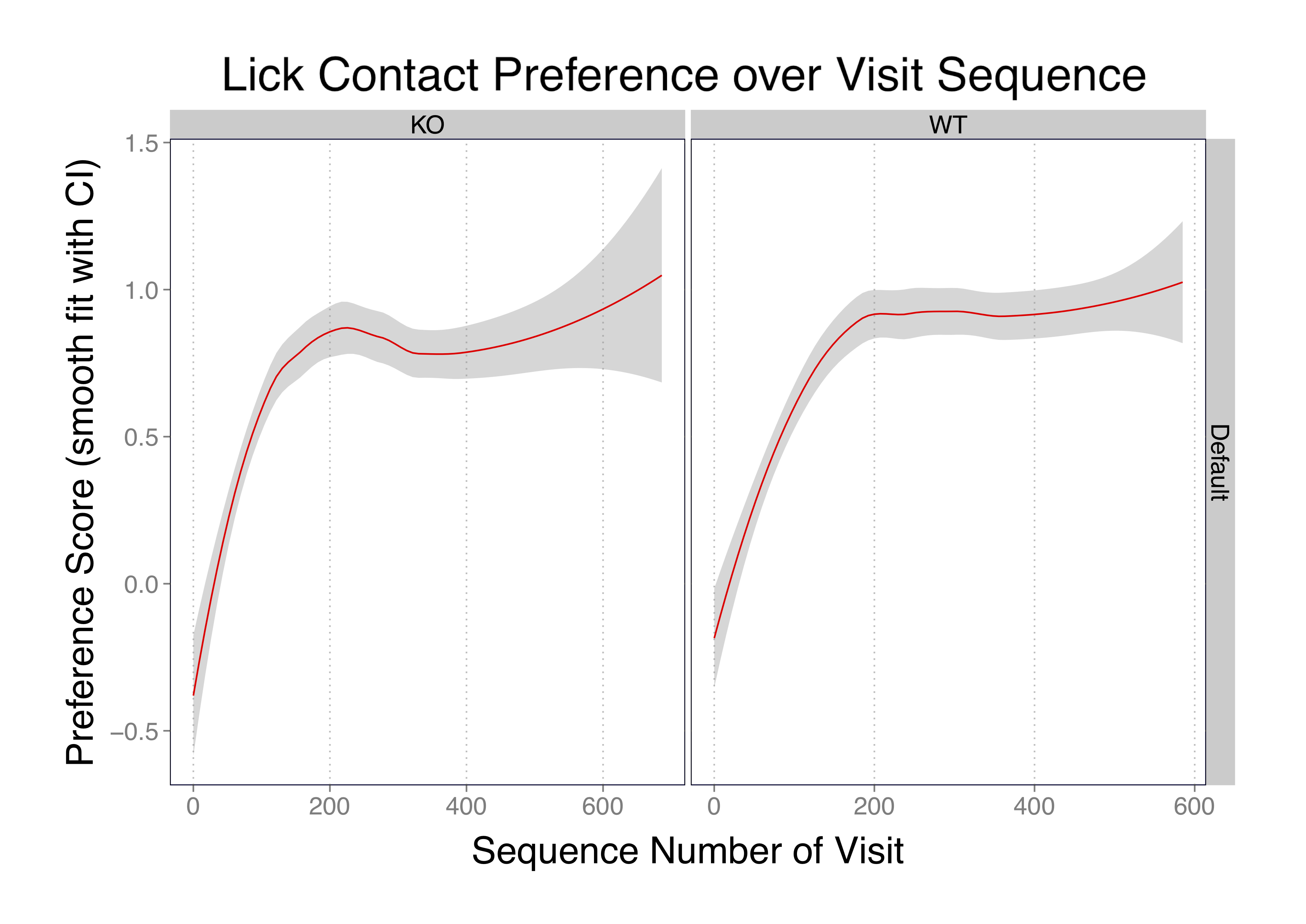
There are many ways to test for stimulus Novelty effects, the simplest would be to check for effects of novel liquid compounds in a Taste Preference design.
For instance, while sucrose is a preferred compound for many strains of lab mice, often there is an initial avoidance reaction due to novelty!
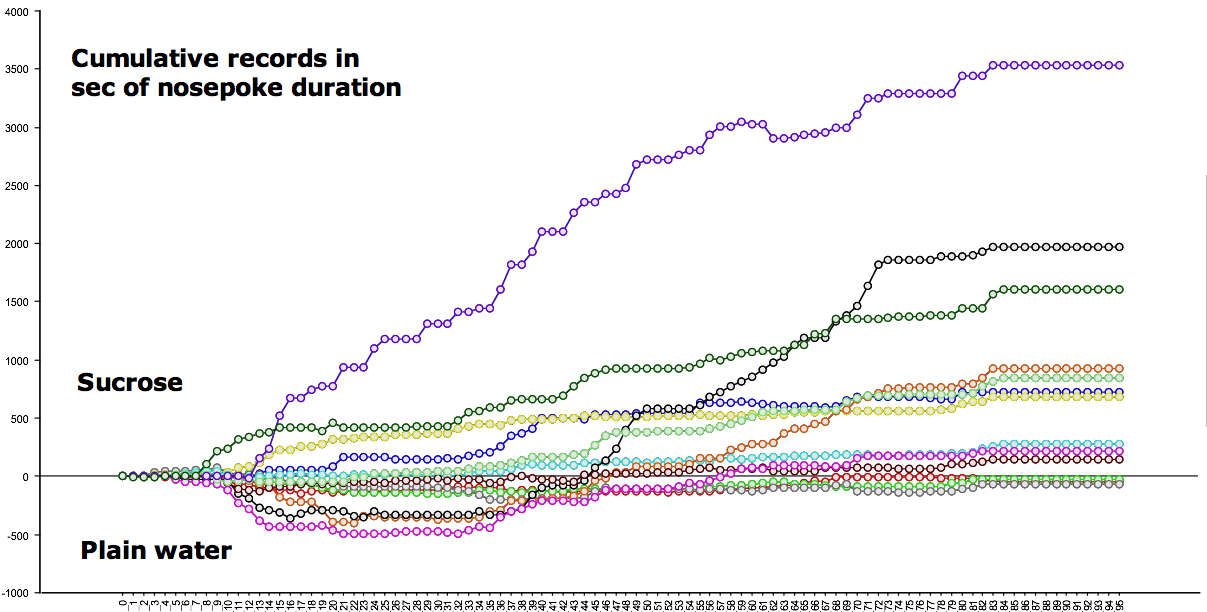
Aversion can easily be conditioned in the IntelliCage, e.g., using a Taste Preference design with a Temporal Scheme for access to bottles containing LiCl.
Addition of LiCl reduces amount drunken significantly below the average amount drunken during prior drinking sessions.
After two more drinking sessions presenting only water, a second presentation of LiCl solutions shows that consumption is significantly reduced further.
Hence, mice have learned the taste-malaise association and consume almost no LiCl-stained water anymore.
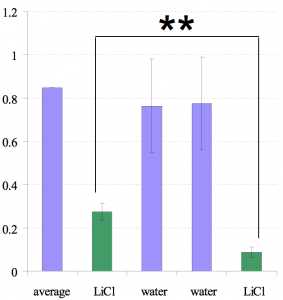
There are many different anxiety measures, one of which involves a probe trial experiment. Here, one first induces the animals to avoid visiting a certain Corner, e.g., by punishing nosepokes in incorrect corners with an air puff.
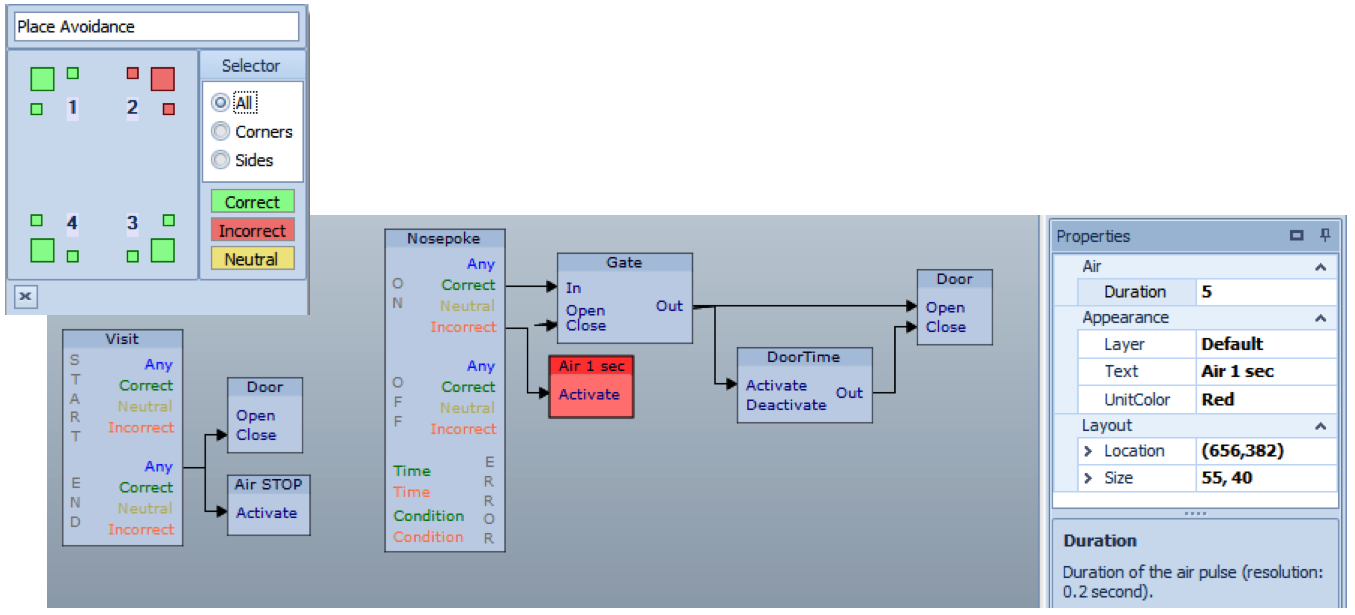
A probe trial after Avoidance Learning reveals persistance of aversion which could be seen as a measure of some aspect of anxiety. Probe Module differs from Avoidance Module only by deletion of the Air unit!
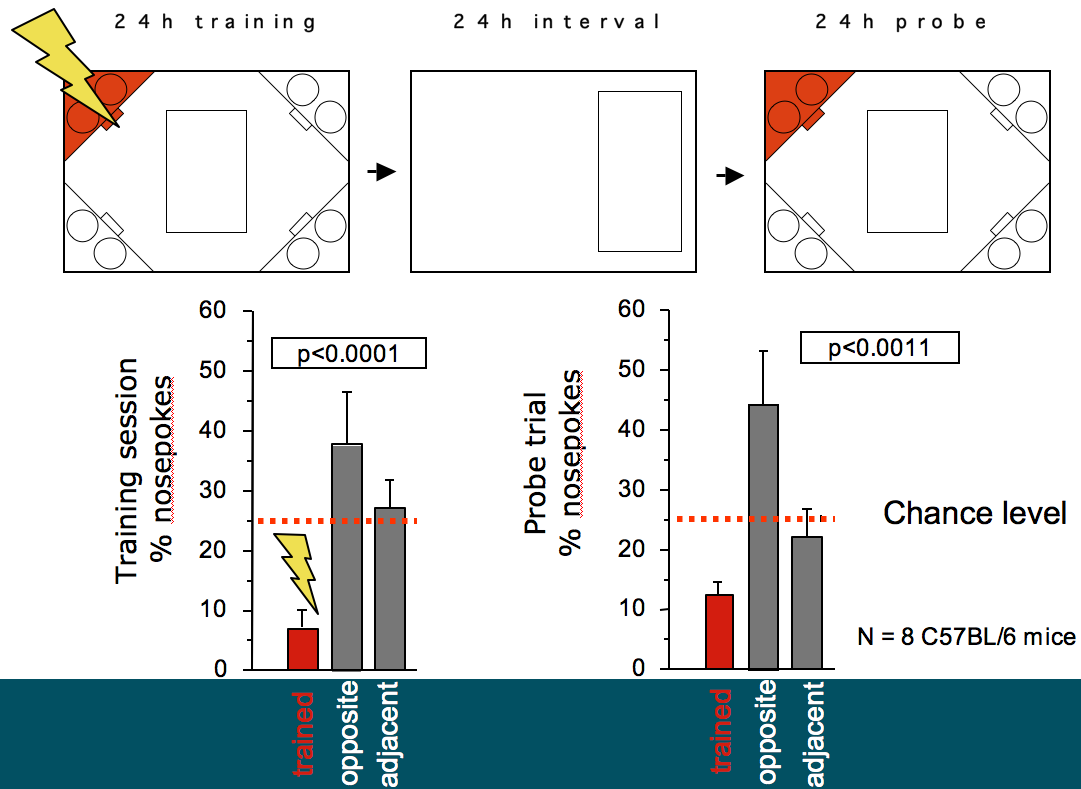
A Serial Reaction Time task, like e.g., in a 5-choice box, can easily be mimicked in the IntelliCage by NewBehavior/TSE-Systems. In the design, the DRLtimer delay is varied randomly and end of delay is indicated by LEDs. Reward will occur only if a second nosepoke is not given before end of delay phase (i.e., Differential Reinforcement of Low response rate, DRL).
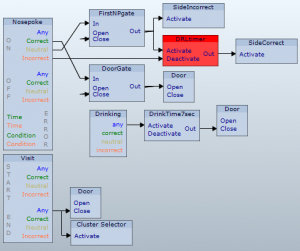
Premature responses (nosepoke before indicator LED is switched on) can represent impulsivity, while delay of correct responses (time after LED switches on till correct nosepoke) is taken to represent the attentional state.
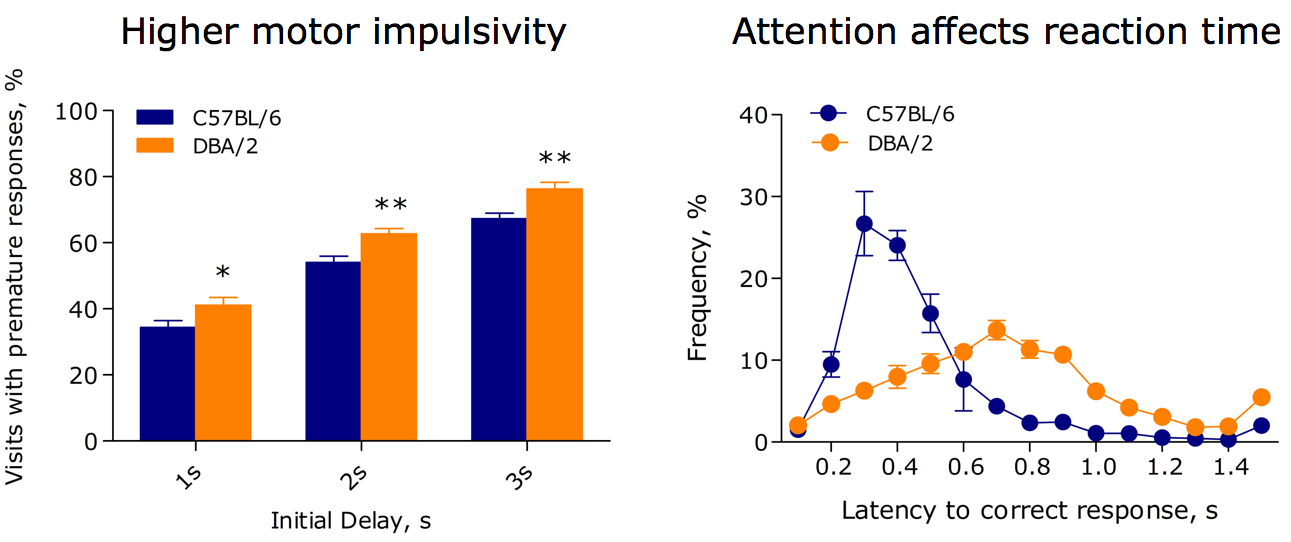
Delay discounting measures the propensity of an animal to prefer a more immediate reward in comparison with a preferred, but delayed reward.
For instance, a nosepoke before LED on may have no effect, one during LED switched on will open the door for water access shortly, one after LED switch off will open the Door for a longer period of time.
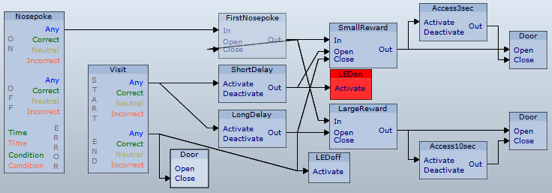
D2 shift their preference to small-and-soon reward much earlier than B6 (indicating a higher level of impulsive decision-making).
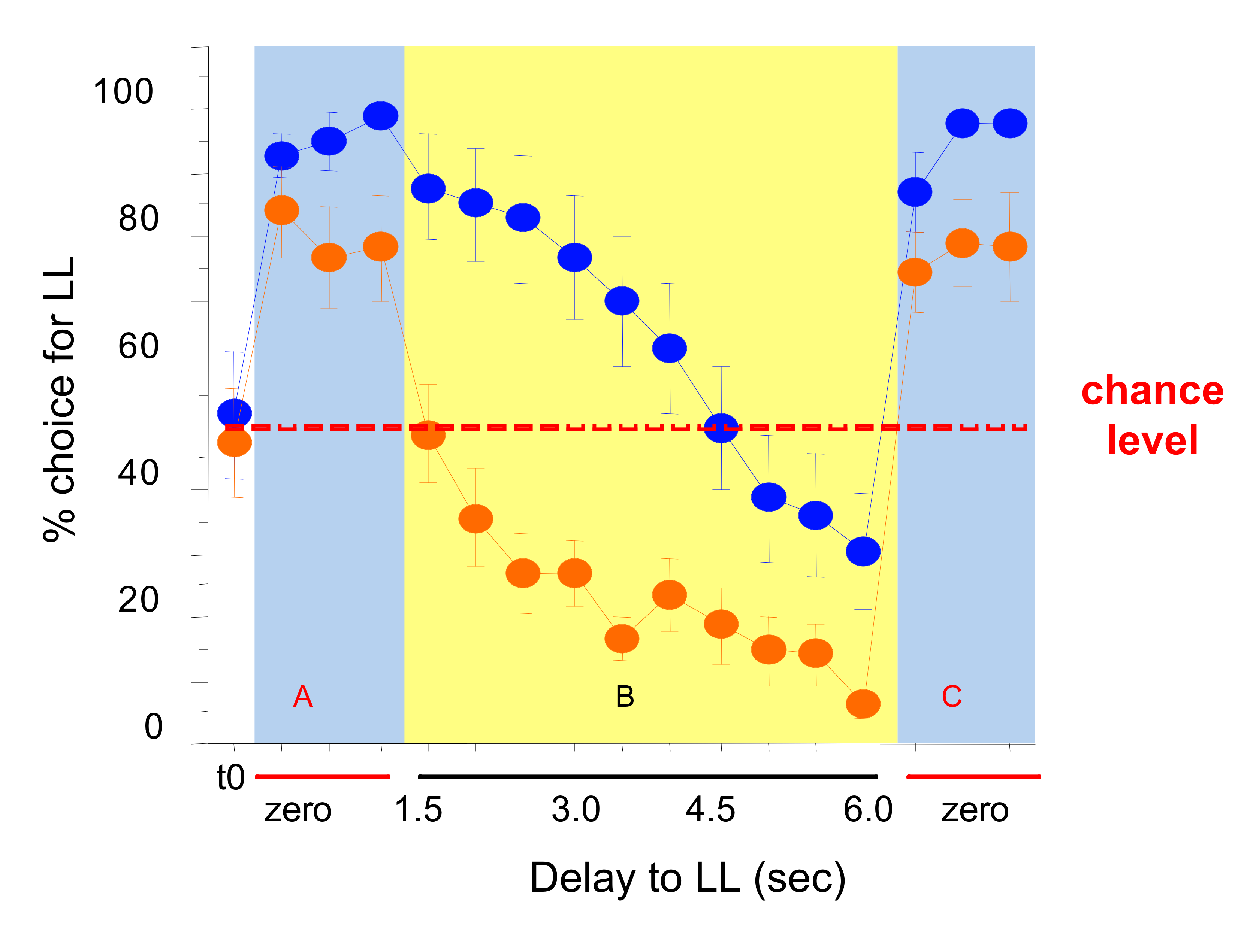
Alternatively, one may use a Taste Prefence design and increase the delay required to open the preferred sucrose door relative to the water door in each corner.
Titrating the Delay Discount for sucrose solution in an IntelliCage with 5 knockout versus 6 wildtype mice. Lick preference for sucrose side drops sharply from near 100 to near 0% with increasing delay required to open sucrose door.
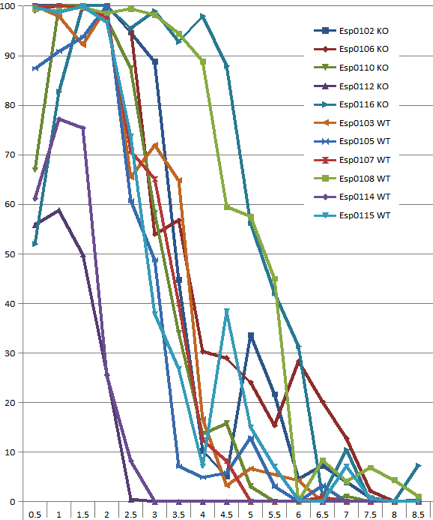
A Fixed Ratio design may simply require animals to nosepoke several times to open the door for water access. Several alternatives may be used for evaluation of different aspects of behavior, e.g., limiting time frame for repeated nosepokes, increasing the fixed ratio after reaching some criterion (progressive design) or setting differential numbers of nosepokes required according to reward type (Discounting design).
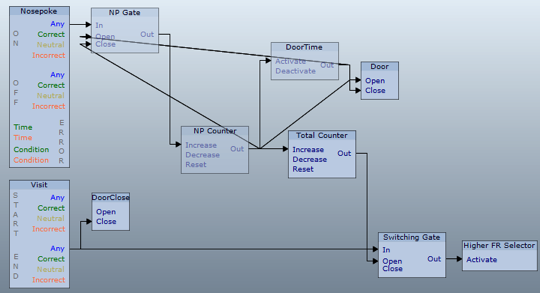
In a progressive Fixed Ratio experiment, animals exhibit increasing number of nosepokes over experimental sessions.
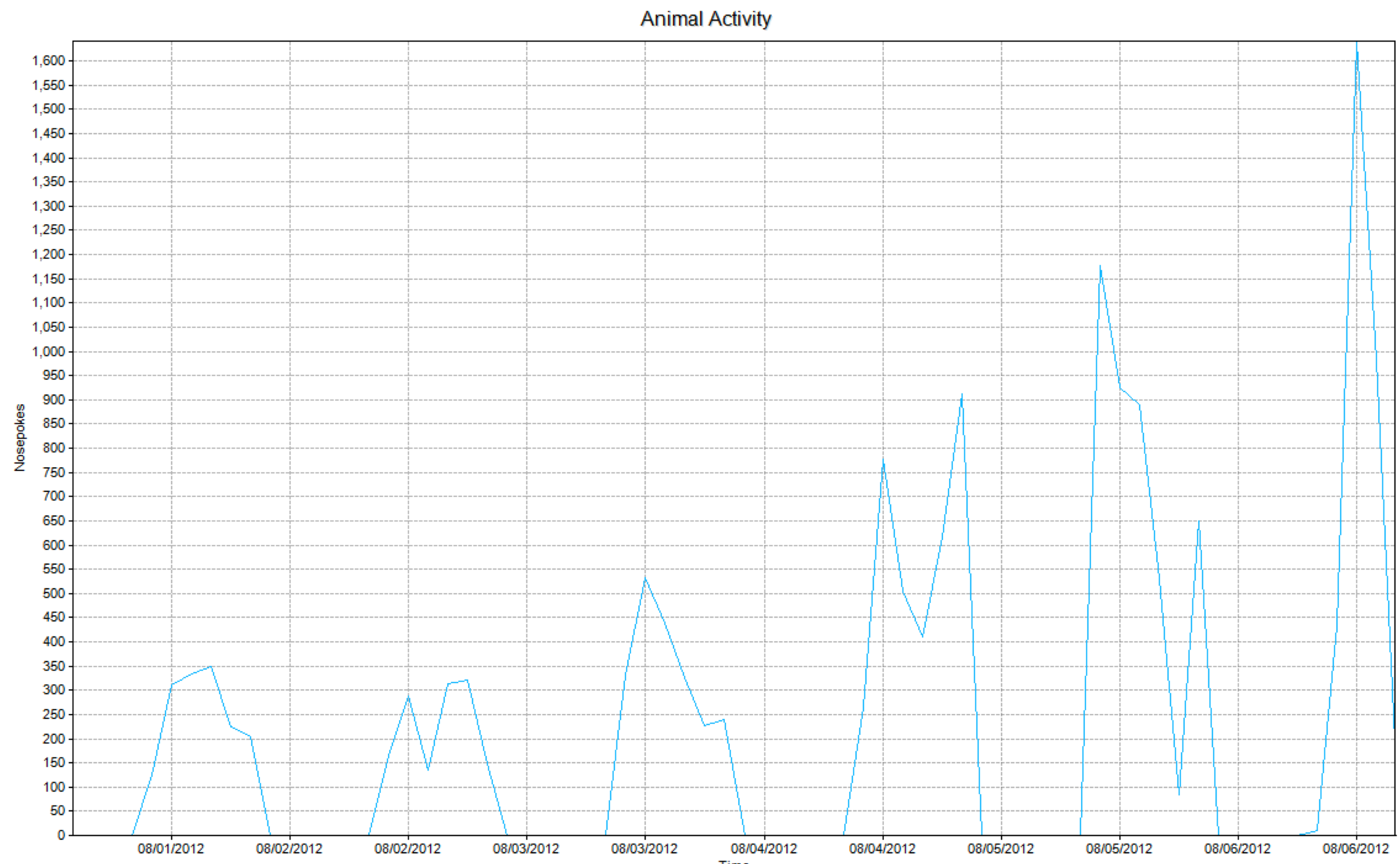
The AudioBox (IntelliCage Addon) allows for an Attentional Set-Shift Go/Nogo design, with LED color and pattern for dimension 1 and sound playbacks for dimension 2.
In CD (compound discrimination), LED1green indicates the Correct Side, LED3red Incorrect. Incorrect Nosepoke leads to Counter reset, Correct to water access. Both lead to an inter-trial non-responsiveness of the system given by the Shunt unit. At each Visit Start, Correct or Incorrect Side is assigned at random. The irrelevant dimension (sound files) is assigned randomly and uncorrelated to Correct/Incorrect assignment.
The SD (simple discrimination) Module is identical to CD, except for skipping the irrelevant dimension. IDS (intradimensional shift) replaces the LED pair by another color/position pattern). In EDS (extra-dimensional shift), LED and Audio units are interchanged and assigned to yet another pair of exemplars, so that Audio now becomes the relevant and LED the meaningless dimension. Reversals simply exchange the exemplars of the relevant dimension.
In all cases, a number of consecutive trials with Correct Nosepoke shifts the animal to the next Module as defined in the Counter unit (EDSrev shifts to the first (Default) Module that simply allow for unconditional water access).
Pairs of wav-files and Audio device assignment in the Setup must be chosen on site. Sequence of dimensions and exemplar pairs might be randomized between animals.
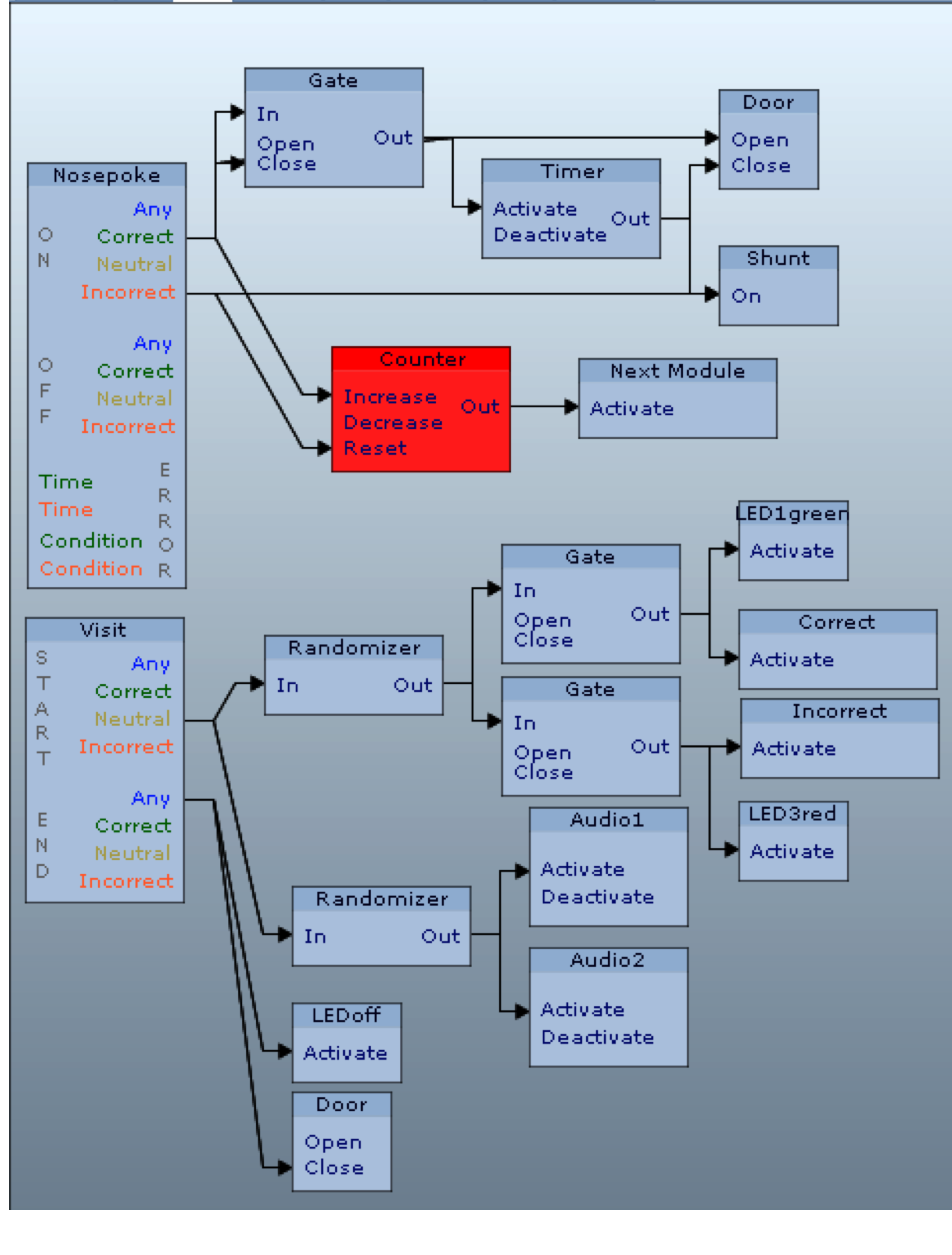
All animals are assigned to the same Cluster in a Place Preference design, i.e., they are all allowed to drink once per Visit only in Corner 1. Day pattern ensures that animals can do so for 1 hour only, twice a day, because the Module switches to Competition at 8 am, back to Default (that does not open doors) at 9 am, and so forth. Hence, animals have to scramble for access to water and ranks become visible in the drinking sequence at start of drinking sessions.
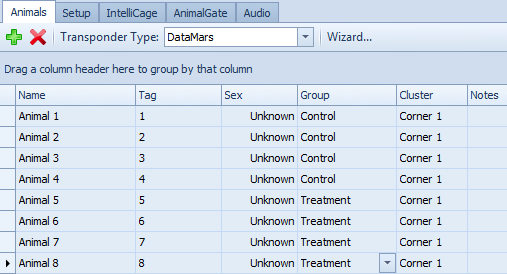
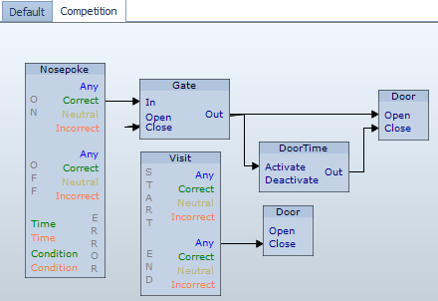
The cueing sequence (ranks on y-axis) at first water intake after start of drinking sessions appeared to be relatively stable: ranks after rewarded corner shift from Corner 1 to Corner 3 correlated significantly. Also, after removal of the dominant female TK0107, ranks stayed correlated.
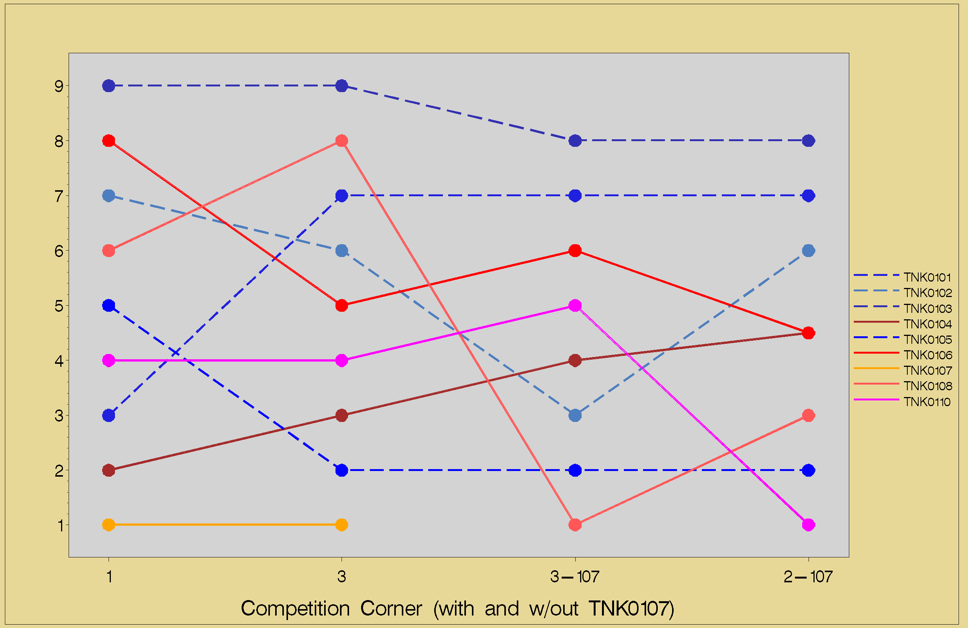
We can provide StaR software that allows one animal’s behavioral performance to affect the conditions of other animals. Hence, social interactions can be manipulated by the system.
For instance, to induce animals to copy behavior of an indicator animal, the design defines certain animals as “leader” and others as “followers”, requiring followers for drinking access to enter the corner last left by their leader.
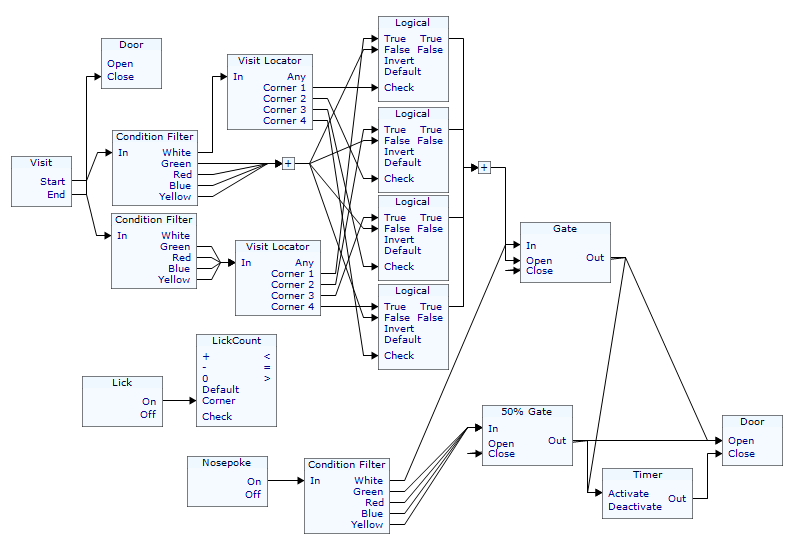
Followers entered the correct corner (the one last left by the indicator animals) significantly more often after the leader left it then expected from their overall visiting distribution.
